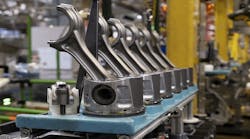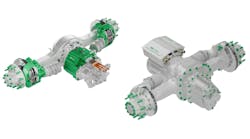Engine manufacturer Cummins has developed a high-temperature steel alloy in collaboration with Oak Ridge National Laboratory (ORNL) that the companies stated in a press release will increase engine durability and efficiency.
Cummins has worked with ORNL since 2018 to research and develop an alternative steel alloy with improved high-temperature oxidation resistance and strength while maintaining affordability.
“The partnership with Oak Ridge National Laboratory and development of the new material shows the serious potential for improvements and efficiencies for our engines,” said Corey Trobaugh, Cummins’ director of applied science and technology.
See also: Cummins reaches engine milestone: 2.5M engines made at Jamestown plant
Previous materials have limited engine efficiency gains and emissions reductions and prohibited engineers from extracting more heat from the combustion process, due to materials degrading prematurely from oxidation, scaling, and cracking, according to the release.
The new material is stronger at elevated temperatures compared to the most commonly used commercial steel, 4140, and has virtually eliminated those degradation pathways, according to Cummins. When comparing the new alloy to 4140 steel, the new alloy exhibited 85% greater ultimate tensile strength (the maximum stress a material can withstand without breaking while being stretched or pulled before) and 143% greater fatigue strength (the maximum cyclical stress that can be applied for the material to withstand at least 10 million cycles before failure) at 600 degrees Celsius (1,112 F).
In an engine test of pistons manufactured from the new material, no cracking occurred, and very little oxidation or scaling occurred, according to Cummins. The new medium carbon steel offers at least a 50 C (122 F) increase in temperature capability as compared to current 4140 steels. Development of the new alloy was supported by the Lightweight Materials Consortium (Lightmat) program out of the Department of Energy’s Vehicle Technologies Office.



